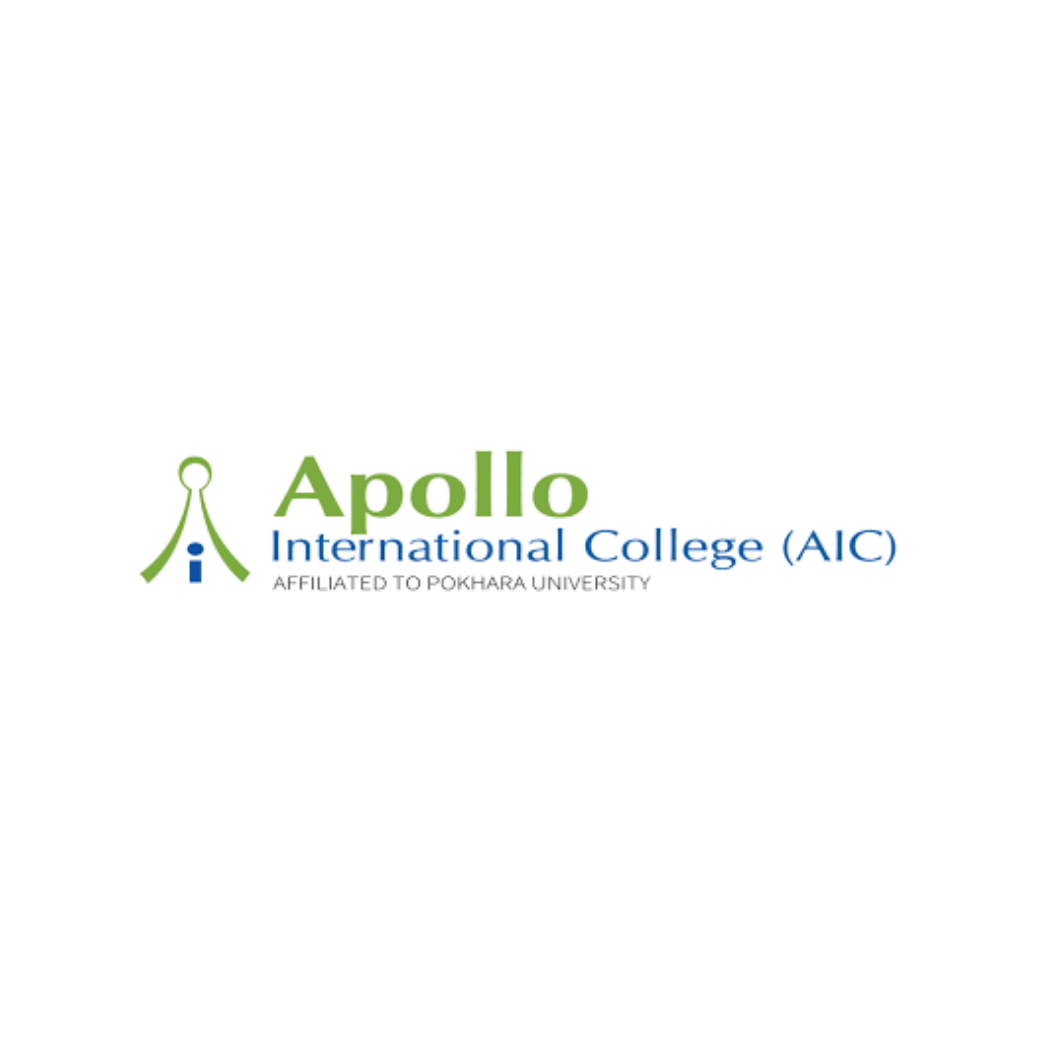– Ananda Ghimire (Faculty of Management) & Deep Kumar Baral (Faculty of Management, Kathmandu Model College, TU, Nepal)
Abstract:
Development is a peaceful transformation of all round betterment. Tourism is one of the best means to attain development at the local level. To be sustainable, it must be accepted by the local people. The local people need to be aware of tourism, involve in tourism activities, realize its benefit, and impacts to be sustainable. Nepal, as a destination, includes many destinations within it such as Everest region, Annapurna region, Pokhara, Chitwan, and so on. Kathmandu Valley as a destination contains seven World Heritage Sites, which is a world record by itself. Among several local heritage sites, culturally rich Newar villages of Bungamati and Khokana have all the basic elements to be a tourism destination. The comparative analysis of these two destinations analyze the local perception about tourism, sustainable tourism, impacts and benefits of tourism and identifies the variables and factors needed to be studied to be a sustainable tourism destination.
Keywords: destination, sustainable, tourism, cultural destination, local people, community, triple bottom line
Introduction:
Though tourism is considered to be comprising of 4As– Attraction, Accessibility, Accommodation and Amenities–, tourism destination requires 7As to be functional (Ghimire, 2004, 2021). Tourism is managed from three levels. Government and ministers are at the center, business organizations are operating activities and locals are at the grass root level. It is understood and taught in 6 different approaches (Smith, 1998). Tourism includes three components. They are “Here”, “And” and “There”. “Here” is where the tourism activities are operated. It is the tourism destination. “There” is from where tourists are generated, that is the market. “And” is the accessibility which connects destination with market (Ghimire, 2021).
Nepal as a tourism destination contains several destinations within itself such as, Everest Region, Annapurna Region, Chitwan National Park, Kathmandu Valley, Kathmandu City, Kathmandu Durbar Square, etc. Kathmandu Valley has seven UNESCO World Heritage Sites, which is more than any country to offer at a single spot. Among several international heritage sites Bungamati and Khokana bust with national heritage. These two villages have most of the basic requirements to be a tourism destination and are well accepted by visitors, travel writers, and travel agencies.
Both of these villages are heavily populated by Newar community, the indigenous people of the valley and are very famous for culture and hospitability.
Most commonly, destination management is understood to be the role of NTO (Bhatia, 1995; Kotler, Bowen and Makens, 2002; Middleton, 1998). In some countries, like in Bhutan it is the responsibility of the government to manage a destination. It can be managed by regional bodies as in India. The destination may be managed by an independent body as a National Tourism Organization as Nepal Tourism Board in Nepal. The central body will establish different offices at the regional levels. Local governments also establish tourism development committees. In some countries, they manage a destination through Tourism Development Committee or by Community Based Tourism. It can be managed by business enterprises for business purpose as a village tourism as Sirubari, in Sanjya District of Nepal. Some INGOs such as, UNWTO, ICIMOD, SNV, etc., are also involved in destination development and promotion. So tourism destination management is hard to define in objective terms (Caalders, 2002; Caalders, Cordero, Duim, Montijan and Ritsma, 2003).
A destination is a single product for a marketer but it comprises of many tourism organizations and operations within it. It includes everything of the region. Some of them are directly involved and others are indirectly, some are economically involved and others non-economically involved, some of them are living and some of them are dead or past. Sustainable destination development is the unifying concept that integrates the environmental, social and economic consideration of contemporary. (Howie, 2003; Kotler, Bown, and Makens, 2002) Destination is a place of interest identified by tourist or by destination promoters. It is one product, one tour, one travel experience. (Kotler, Bowen and Makens 2002) Destinations are the places of interests to tourists. It has the potentiality to attract, the activities to attach and experience to realize, and it has accessibility and supported by amenities. It includes vast ranges of tourist needs and tourism related business as well as the resident communities (Howie, 2003). The aim to identify destination is to create joint effort, productification and commoditification of a place of interest to the ‘outsiders’. Identification of destination is to realize the tourism potentialities, its economic value, and development of the destination for social justice. It is done to create joint effort and to strengthen the effort (Ghimire, 2021).
It is well agreed that sustainability of a destination is based The Triple Es. (Caalders, et.al. 2003). They are economy, ethical and ecology. These Three Es. are explained as Three Ps by BUITEN. The publication has clearly identified responsibilities of each level.
The table 1 explains the Three Bottom Line. It explains the responsibilities of each sector who are involved in tourism directly. The table tries to explain how sustainability is possible at the destination. To attain the sustainability each and every unit or sector must be sustainable.
Table 1
Triple Bottom Line of Sustainable Tourism
| P / E | Sectors | Responsibility |
| Profit ( Economy) | Government | Revenue and fair distribution of |
| Long-term economic | the income | |
| viability and fair | ||
| Destination | Income generation at the | |
| distribution of profit | destination | |
| Tourism | Commercially profitable; | |
| Stakeholders | Economic viability | |
| People (Ethical) | Government | Social justice; Social welfare |
| Attention for liveability or | ||
| Destination | Social and cultural integrity | |
| regional, cultural and social | ||
| Tourism | Manpower/ human resource | |
| environment | Stakeholders | management |
| Plant / Planet (Ecology) | Government | Environmental management |
| Relation between tourism | Destination | Cultural, natural, heritage |
| and environment | management. | |
| Image, goodwill, hospitality, | ||
| friendship, trust, and so on | ||
| Tourism | Plant/ factory management | |
| Stakeholders |
Source: Caalders, Cordero, Duim, Montijan and Ritsma, (2003, p. 9).
Objectives of the Study:
The main objective of the study is to inquire and assess the general awareness of the local people regarding importance and impact of tourism. The specific objectives to study are as follows:
- To examine the awareness of local people about tourism and sustainable tourism;
- To evaluate people’s awareness about the tourism;
- To evaluate the people’s perception about the impact of tourism and ;
- To make comparative evaluation of people’s awareness about tourism, sustainable tourism between the two destinations; Bungamati and Khokana
Literature Review:
Literature review shows that Tourism plays a vital role in national economy of Nepal. It accounts approximately 16% of the total foreign earnings and 4% of GDP. (NTB, 2001) But the rural people are not getting the real benefit from tourism (Hummel, 2002) as it is concentrated in a few limited areas. (Hummel, 2002; Dermer, 2002) Tourism of Nepal is limited within the Tourism Golden Triangle that is Kathmandu, Chitwan and Annapurna Region. Everest region is benefiting only in the limited trekking trail. Even in Kathmandu Valley tourists visit limited hot spots. Some negative impacts on those frequently visited areas have been noticed (Banskota and Sharma, 1995; Sharma, 1992). Due to little or no re-investment at the destination or to the local community the local people are not getting true benefit from the tourism operated in their area. (Dermer, 2002; The Mountain Institute, 1998) Different researches conducted by CEDA (Banskota and Sharma, 1995, 1998; Sharma, 1992), UNDP (1992, 1995), UN WTO (1992, 1993, 2003), PATA (1996, 1999) have realized the need and importance of local involvement to attain sustainable tourism, which is true in Nepal also.
Since 1992 United Nations Conference on Environment and Development (UNCED) the concept of sustainable tourism has been acknowledged worldwide. One global mechanism, that was developed to contribute to sustainable, is the Sustainable Development Agreement (SDA). More than twenty projects were undertaken under the agreement between the Latin American Faculty of Social Sciences (FLACSO)
in Costa Rica, Wageningen University, and BUITEN. They have underlined the importance of three basic factors, which is popular as Three Es. They are economic, ecological (environmental) and social aspects. These three elements must be addressed to operate sustainable tourism at the destination. (Caalders, et.al. 2003).
Sustainable development of tourism is fought with difficulties as is hard to define in objective terms. Tourism is made of 4As. They are Attraction, Accessibility, Accommodation and Amenities. But a tourism destination needs 7As to be functional (Ghimire, 2004, 2021). Tourism is managed from three levels. Government and ministers are at the center, business organizations are operating activities and locals are the grass root level. It is understood and taught in 6 different approaches (Smith, 1998).
Methodology:
Impact assessment of tourism is complicated due to multiplicity of different socio-cultural, economic, and environmental effects generated by a variety of tourism, which are interacting with a number of diverse ethnic groups. The “locals” are the first priority of sustainable tourism. If local people are aware of tourism and are aware of its benefit, they will be motivated to involve in tourism. The involvement in tourism activity generates income and retains benefit at the destination. Thus it is hypothesized
that the programs are no longer effective if level of awareness is low. There is significant relation between level of awareness and success of programs at the destination.
The study is based on the assumption that the “locals” are the first priority of sustainable tourism. The local is the total of 3Es; Economy, Ethical and Ecology. Tourism creates either negative or positive impact (see figure 1). If local people feel they are receiving benefit the tourism in their village is operating sustainable. Their level of awareness and positive perception are the elements to be measured. The main issues that constitute the building blocks or framework for study were Tourism awareness, Sustainable tourism awareness, Awareness about the benefit and impact of tourism, and Local perception on the impact of tourism.
Figure 1
Sustainable Tripod
The method of analyzing and comparing two destinations to identify the local citizen’s perception is based on the process followed by Lee, Barnowee, and McNabb (2005). The comparative study tested the perceived importance of environmental and social concern in Twain and USA. Their study was based on Farhar (1994); Furman (1998); McDanies, Lawrence, and Stivic (1996); Titou and Kahneman (1979), Schindlers (1999); Smith-Sebasto and D’Costa (1995) and Zimmerman (1996). The same method of comparative study of two destinations was done by Caalders, (2002); Duim, Caalders, Cordero, Montijn and Ritsma, (2001); Sadeque, (1997), and Caalders, Suim, Mispelaar and Ritsma, (2003).
The factors responsible to be sustainable are recommended by international tourism related institutions such as Asian Development Bank ( 1990), ICIMOD (1992), UN
(1993,2003), and by Caalders, (2002); Duim, Caalders, Cordero, Montijn and Ritsma,
(2001); Sadeque, (1997), and Caalders, Suim, Mispelaar and Ritsma, (2003).
For the purpose of study the elements and subjects are modified under 40 factors within four headings as environmental impact, social impact, social benefit and economic benefit. They are as follows:
- Ecology/ Environment Impact: Environment is actually a complex of several inter-related factors and is very dynamic. Each item is mutually interactive affecting each other in various ways. For the purpose of study the items are grouped into 10 factors as follows
- Air pollution
- Chemical pollution
- Water pollution
- Natural ( Vegetation )
- Solid waste
- Manmade environment
- Climate change
- Forest
- Noise, visual pollution
- Soil pollution
- Social /Cultural Impact Element: Social study contains 9 items associated with the impact on society. They are as follows:
- AIDS
- Crime and violence
- Population increase
- Drug addiction
- Alcoholism
- Tobacco use
- Change in local culture
- Change in local dress
- Traditional behaviour
- Social and Cultural Benefit Element: Social/cultural benefit components are grouped into 8 factors as follows:
- Equity (distribution of income)
- Women’s education
- Deprived community
- Support for education
- Social reform such as suppression, late marriage, human right, etc.
- Supporting local culture.
- Participating in local festivals
- Cultural exchange.
- Economic Element: Several economic components are grouped into 13 factors as follows:
- Local autonomy
- Protection of local industry/ handicrafts
- Support infrastructure – rural development
- Local involvement in development work
- Increase in investment ( injection at the destination)
- Employment, (local employment)
- Marketing linkages with main market
- Creating indirect employment
- Developing local business network
- Support social welfare in the community
- Participating in local social and cultural organisations
- Support existing regulations, and permits arranged
- Give greater support for women’s education and employment for the deprived and scheduled cast
The primary data were collected from twenty-two direct questionnaires. Nineteen questions were multiple responses close ended and three questions were open ended. Similarly four questions related to perception about the impact and benefit were developed in 5 point Lickard Scale range from 1 (One) to 5 (Five). One being very high and five being very low and “No” response were treated as not aware, do not perceive, or ignorance.
Systematic random sample of 150 respondents from each two villages of Bungamati and Khokana were collected, which was 2.5 % of Bungamati and 3.35% of Khokana total population. The collected data, information are presented in tabulated form.
Analytical statistical tools such as comparative tables, comparative ratios, percentage, mean, and standard deviation were used. ANOVA was used at 05 Level of Significant. SPSS Program and Microsoft Excel were used for statistical purpose.
Analysis:
The response of local people about tourism, sustainable tourism, benefits they perceived was collected and analyzed. The findings are presented in the Table 2
Table 2
Local Response on the Awareness of Tourism
| QN | Subject | Bungamati | Khokana | ||||||
| Aware | % | Not | % | Aware | % | Not | % | ||
| aware | aware | ||||||||
| 1 | Tourism | 107 | 71.3 | 43 | 28.66 | 102 | 68.0 | 48 | 32.0 |
| 2 | Sustainable Tourism | 61 | 40.7 | 89 | 59.0 | 62 | 41.3 | 88 | 58.7 |
| 3 | Tourist Arrival | 99 | 66.0 | 51 | 34.0 | 99 | 66.0 | 51 | 34.0 |
| 4 | Tourist Arrival and Its Benefit | 87 | 58.0 | 63 | 42.0 | 31 | 20.7 | 119 | 79.0 |
| 5 a | Economic Benefit of Tourism | 115 | 76.7 | 35 | 23.33 | 79 | 52.7 | 71 | 47.3 |
| 5 | Social Benefit of Tourism | 52 | 34.7 | 98 | 65.33 | 55 | 36.7 | 95 | 63.3 |
| 5 | Natural Benefit of Tourism | 50 | 33.3 | 10 | 66.66 | 39 | 26.0 | 111 | 74.0 |
| 6 | Feeling of Responsibility | 62 | 41.33 | 88 | 58.66 | 49 | 32.66 | 101 | 67.3 |
| 7 | Local Agency | 107 | 71.33 | 43 | 28.66 | 47 | 31.33 | 103 | 68.7 |
| 8 | Satisfaction with Dev. | 127 | 84.67 | 23 | 15.33 | 132 | 88.0 | 18 | 12.0 |
| 9 | Know about Attraction | 130 | 86.7 | 20 | 13.33 | 123 | 82.0 | 27 | 18.0 |
| 9 a | Awareness of Attraction | 147 | 98.0 | 3 | 2.0 | 141 | 94.0 | 9 | 6.0 |
| 10 | Importance of Attraction | 130 | 86.67 | 20 | 13.3 | 125 | 83.33 | 25 | 16.7 |
| 11 | One Who Organize Activities | 134 | 89.33 | 16 | 10.7 | 131 | 87.3 | 19 | 12.7 |
| 12 | Organizing Activities | 139 | 92.7 | 11 | 7.3 | 135 | 90.0 | 15 | 10.0 |
| 13 | Accessibility | 131 | 87.33 | 19 | 12.7 | 129 | 86..0 | 21 | 14.0 |
| 14 | Expensive to Visit | 132 | 88.0 | 18 | 12.0 | 137 | 91.3 | 13 | 8.6 |
| 15 | Entrance Fee | 136 | 90.6 | 14 | 9.3 | 138 | 92.0 | 12 | 8.0 |
| 16 | Accommodation | 133 | 88.7 | 17 | 11.33 | 135 | 90.0 | 15 | 10.0 |
| 17 | Actors/ Affinity | 137 | 91.3 | 13 | 8.67 | 130 | 86.7 | 20 | 13.3 |
| 18 | Affinity | 97 | 64.7 | 53 | 35.3 | 81 | 54.0 | 69 | 46.0 |
| 19 | Amenities | 89 | 59.3 | 61 | 47.0 | 83 | 55.3 | 67 | 44.7 |
| Total | 1642 | 84.29% | 308 | 15.79% | 1590 | 81.83% | 360 | 18.46% | |
The Table 2 shows that local people are aware of tourism (71.3% in Bungamati and
68% in Khokana) but are not aware of sustainable tourism (59 % in Bungamati and
58.7% in Khokana). The table shows that lower percentage of people are interested with tourist arrival and the benefit related to their arrivals. (Bungamati = 58% and Khokana
- 20.7%) which shows that tourists arrivals has no impact in their daily life. Minimum percentage of people are aware of natural benefit of tourism (only 33.3% in Bungamati and 26% in Khokana). Tourism has direct relation with environment. Quality of destination is determined by quality of environment. The respondents are familiar with economic benefit but not aware of social and natural benefit of tourism.
The analysis showed that local villagers were aware of economic benefit (76.7% in Bungamati and 52/7% in Khokana) but people were not aware of social and environmental benefit. It presents alarming challenges for destination management. Only 34.7% people were aware of social benefit and 33.3% were aware of environmental benefits in Bungamati. In the village of Khokana 36.7% people were aware of social benefit and only 26% were aware of environmental benefits. So it is concluded that tripod of 3 E is not standing properly at these two destinations Bungamati and Khokana.
The analysis shows that people were aware of their responsibility to develop tourism in their village (17.7% of Bungamati and 13.3 % of Khokana). They knew that they must initiate themselves which showed good hope for destination management. The analysis showed that the local people were not satisfied (91.31 % of Bungamati and 86.0% of Khokana) with the tourism development effort of the external agencies such as government, NTB, hotel or travel agencies. It shows that these organisations were not involved in tourism development at the local level.
The analysis exhibits that people of Bungamati and Khokana were aware of importance of tourist attractions (86.7% and 82 % respectively). In the village of Bungamati people were involved in wood carving business so 29.3% believed that tourist visit their village to see crafts. But the people of Khokana (31.3%) believed that tourists visit their village to see typical Newar village. Wood carving business generates income at the destination but sightseeing tour organized by outsiders do not generate income at the local level.
The villagers of Bungamati and Khokana celebrate many interesting and attractive festivals but they were not able to utilize the economic value of those festivals. The local people were aware of the fact that they do not have any tourism enterprises in their village. (86.7 % in Bungamati and 82% in Khokana)
Destination manager need local support to organize activities. Majority of people know that they had never organized any activities to attract tourist (82.7% in Bungamati and 82% of Khokana).
Accessibility is another important component of tourism. It is the means by which a tourist can reach from Point of Sale (POS) to the Point of Service Delivery (POSD). The analysis is necessary to identify travel barriers, physical transport system and travel supporters. 88.3% respondents of Bungamati and 89.7% of Khokana knew that their villages have good accessibility.
Affinity is to evaluate the guest -host relation. A successful tourism destination manager needs to evaluate the impact of tourism on local people. 91.3% people of Bungamati and 86% of Khokana had never realized any support from tourism enterprises and from tourist or from NTB. Only 64.7% respondents of Bungamati and 54% of Khokana were ready to welcome tourists in their village. This is a big challenge for sustainable destination management.
Final comparative analysis regarding awareness between Bungamati and Khokana is presented in Table 3. It is based on total 22 questions asked to the local people.
Table 3
Summary of Local Awareness
| Bungamati N = 22 | Khokana N = 22 | Total N = 44 | ||||
| Aware | Not aware | Aware | Not Aware | Aware | Not Aware | |
| Mean | 110.800 | 39.200 | 100.950 | 47.550 | 105.875 | 43.3750 |
| Std. Deviation | 31.69194 | 13.69194 | 39.47881 | 38.47826 | 35.68609 | 35.04992 |
| Std. Error | 7.08653 | 7.08653 | 8.82773 | 8.60400 | 5.64247 | 5.54188 |
The descriptive Table 3 shows that sample villagers of Bungamati are more aware of tourism than Khokana (Bungamati = 110.80 and Khokana =100. 95). Standard deviation of aware people of Bungamati is 31.692 where as it is 39.479 in Khokana. (ANOVA sig = .458 between “not aware” and sig = .390 between “aware”).
The comparative analysis between two destinations regarding the tourism and sustainable are presented in the Table 4
Table 4
ANOVA Summary Table
| S.N | Q. No | Subject | F | Sig. |
| 1 | 1 | Difference between two villages regarding aware- | .044 | .835 |
| ness of tourism | ||||
| 2 | Awareness of tourism based on gender in the village | 6.239 | .003 | |
| of Bungamati | ||||
| 3 | Awareness of tourism based on gender in the village | 8.501 | .000 | |
| of Khokana | ||||
| 4 | Difference between the females of two villages Bun- | 3.015 | .084 | |
| gamati and Khokana | ||||
| 5 | 2 | Difference between two villages regarding aware- | .370 | .544 |
| ness of sustainable tourism | ||||
| 6 | Gender and awareness of sustainable tourism in | 3.960 | .021 | |
| Bungamati | ||||
| 7 | Gender and awareness of sustainable tourism in | 4.517 | .021 | |
| Khokana | ||||
| 8 | 3 | Difference between two villages regarding to arrival | .441 | .507 |
| of tourist | ||||
| 9 | 4 | Difference between two villages regarding arrival of | 15.46 | .000 |
| tourist and benefit |
The table 4 shows that there is no significant difference between female members of two villages regarding the awareness of tourism. Respondents of Bungamati and Khokana agree on the economic benefit of tourism and they agree that tourist arrival in their village will be beneficial. In response to 7As, as the basic elements of tourism the sample population of two villages Bungamati and Khokana are significantly different.
The inferential analysis shows that 46.40% respondents of Bungamati are not aware of environmental impacts and 39.67% responded that they realized very low impacts. The local realized the highest impact of tourism on Noise and visual pollution (mean = 3.26). Among the items that correlated most regularly with the items in the scale were Forest and climate change. (r = .160). In the village of Khokana 48.93% respondents were not aware of environmental impacts of tourism and 38.93% expressed very low impact. They realized the highest impact of tourism on Noise and visual pollution (mean = 2.93). The items that correlated most regularly with items in the scale were Noise and visual pollution and Water pollution (r = .171)
The inferential analysis indicates that 44.96% respondents of Bungamati were not aware of social impacts of tourism in their village and 38.59% perceive very low impacts. The local people perceived highest impact on Change in local dress (Mean = 2.78). Among the items that correlated most with the items in the scale were Alcoholism and Drug addiction (r = .204). In the village of Khokana 45.25% respondents were not aware of social impacts and 40.44% perceived very low impacts. The highest impact was realized on Change in local dress. (Mean = 2.79). Alcoholism and Drug addiction were the items that correlated most regularly with the items
In the village of Bungamati 47.41% respondents were not aware and 44.42% responded very low benefit of social benefit of tourism. They realized highest impact on Cultural exchange (mean = 2.79). Among the items that correlated most with the items in the scale were Support local culture and Support community (r = .124). In the village of Khokana 47.75% respondents are not aware of social impacts and 39.33% perceive very low impacts. The highest impact is realized on Cultural exchange. (Mean = 2.67). Social reforms and Support education are the items that correlated most regularly with the items in the scale. (r = .122)
The inferential analysis indicates that 44.46% respondents of Bungamati were not aware and 35.28% responded very low social benefit of tourism. They realized highest impact on Developing local business network (mean = 3.04). Among the items that correlated most with the items in the scale were Employment and Support social welfare (r = .202). In the village of Khokana 44.25% respondents were not aware of social impacts and 37.95% perceived very low impacts. The highest impact was realized on developing local business network. (Mean = 2.86). The items most correlated were Support women’s education and employment for deprives scheduled cast and Protection to local industry (r = .220).
In the village of Bungamati 44.46% respondents were not aware and 35.28% responded realized very low benefit of economic benefit of tourism. They realized highest impact on Developing local business network (mean = 3.04). Among the items that correlated most with the items in the scale were Employment and Support infrastructure (r =
.220). In the village of Khokana 44.25% respondents were not aware of social impacts and 37.95% perceived very low economic benefit in their village. The highest benefit was realized on developing local business network. (Mean = 2.86). The most correlated items were Support women’s education and employment for deprived scheduled cast and Protection to local industry / handicrafts. (r = .122).
The statistical significant difference at 0.5 level of confidence on the 10 items of environmental issues, 9 issues of social impacts, 8 social benefit issues, and on 13 economic benefit issues shows significant difference between two villages of Bungamati and Khokana.
Conclusion:
A study of this nature especially about tourism and hypothetical subject such as sustainable, perception, motivation, awareness, etc. no doubt cannot address all the issues and problems. This study is based on response of local people only, so response from central authority, tourism enterprises and tourist should be drawn. A big area left for research is Community Based Tourism, Village Tourism and Community Based Tourism. Comparative study is possible and lesson can be learned from international communities to implement in Nepal.
Therefore, three essential areas are recommended at local level for further inquiry
tourism marketing linkage, tourism planning and local tourism management. The study can be replicated in other destinations also to test the local support, their awareness and perception about tourism. The model and process developed will helpful for the NGO/INGO and TRPAP to evaluate public support.
References:
Asian Development Bank (1990). Economic Policies for Sustainable Development; Philippines; Asian Development Bank, Manila.
Banskota, K., & Sharma, B. (1995). Carrying Capacity of Himalayan Resources for Mountain Tourism Development; Kathmandu; International Center forIntegrated Mountain Development (ICMOD), Nepal.
(1998). Mountain Tourism for Local Community Development in Nepal; Kathmandu: A Case Study of Phewa Lakeside Pokhara; ICMOD, Nepal
Baun, T., & Mudambe, R. (1999). Economic and Management Methods for Tourism and Hospitality Research; New York; John Wiley & Sons, USA.
Bhatia, A.K. (1998). Tourism Development Principles and Practices; New Delhi.
BUTTEN (n.d.). The contribution of small-scale tourism enterprises to sustainable development: Avenues for the 21st Century; Wageniongen; Foulesweg 136703 BJ,The Netherlands.
Caalders, J. (2002). Rural Tourism Development, a Network Perspective. Wageningen; Wageneningen Universiteit Postbus 9100 6700 HA; The Netherlands.
Caalders, J., et al. (2003). Sustainable Tourism Chains, Connecting Small-scale Enterprises in Costa Rica to the Dutch Tourism Market; Wageningen; WageningenUniversity & Research Center, Socio- Spatial Analysis of Land Use (Recreationand Tourism) Group General Foulkesweg 13 6703 BJ; The Netherlands BUTTEN.
- (2001). Developing Sustainable Tourism. The Case of Manuel Antonio and Texel; Wageningen; Wagenin University and Research Centre, Department of Environmental Science, Socio-Spatia Analysis/Recreation and Tourism; General Foulkesweg 13, 6703 BJ; The Netherlands.
Dermer, J. (2002). A preliminary Study, Tourism -Related Training and Education in Nepal; Kathmandu; International Center for Integrated MountainDevelopment (ICIMOD), Nepla.
Dunstan, K.; Kaucz, J., & Tonge, R. (1999). Tourism Planning Manual: A practical Guide for the Preparation of Local and Regional Tourism Development Plans. Melbourne: Country Victoria Tourism Council, Level 3, 114 Flinders Street, MELBOURNE VIC 3000.
Ghimire, A. (2004). Travel and tourism – an Introduction. (8nd ed). Katmandu; Ekta Books, Nepal.
Ghimire A. & Bimal K. (2021). Sustainable Tourism for Rural Development; Lalitpur; Alchemy Publication, Nepal.
Howie, F. (2003). Managing the Tourist Destination. London; Continuum, The Tower Building 11, Vork Road.
Hummel, J.; Oostveen, T., & Stoer, P. (Eds.) (n.d.). Sustainable Tourism Development in Nepal Vietnam and Lao PDR: Experiences of SNV and Partner Organisations. Netherlands: SNV Netherlands Development Organisation, Public Relation and Communication Unit Bezuidenhoutseweg 161, 2594 AG Den Haag.
IUCN (2002). “Sustainable Tourism in Protected Areas” Guidelines for Planning and Management. Adrian Phillips Series (Editor), Paul FJ Eagles, Stephen F McCooland Christopher D. Haynes. Published by World Commission on Protected Areas (WCPA), Best Practice Protected Area Guidelines Series No 8. The World Conservation Union and IUCN
Kotler, P., Bowen, J., & Makens, J. (1999). Marketing for Hospitality and Tourism. (2nd ed). Delhi: Pearson Educational (Singapore) Pvt. Ltd. India Brand 482 FIE Patpargani, 10092, India
Lee, C.; Barnowe, T., & McNabb, D. E. (2005). Environmental perceptions, attitudes and priorities: Cross- cultural Implications for public policy. Tacoma WA: School ofBusiness, Pacific Lutheran University, 98447, USA.
Middleton, Victor T. C. (1998). Marketing in Travel and Tourism. Woburn, MA A division of Reed Educational and Professional Publishing Ltd, Butterworth-Heinemann, Linarcre House, Jprdan Hill, Oxford OX2 8 DP. 225 Wildwood Avenue, 01801-2041





















